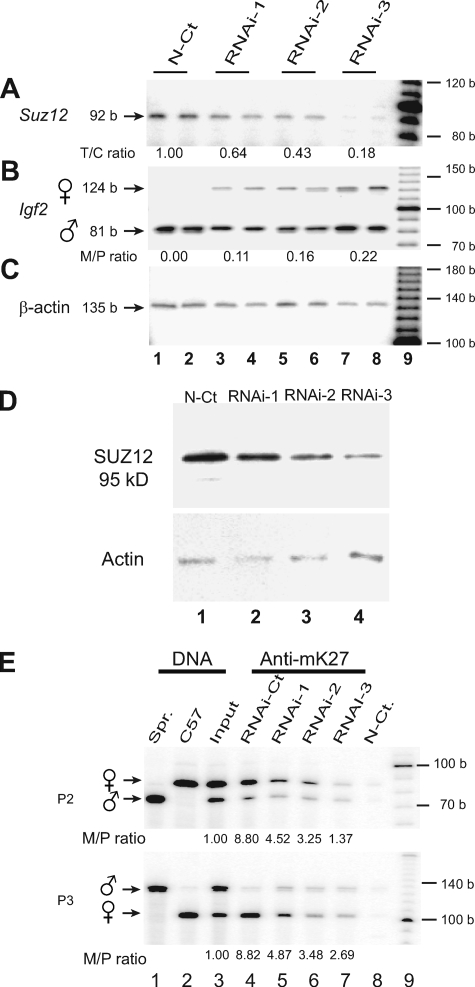FIG. 5.
Loss of Igf2 imprinting induced by RNAi knockdown of Suz12. (A) Quantitation of Suz12 mRNA by RT-PCR in Suz12 knockdown cells. The T/C ratio is the ratio of Suz12 mRNA in RNAi-treated cells to that in control cells (N-Ct). (B) Igf2 imprinting in Suz12 knockdown cells with polymorphic restriction enzyme DpnII. The M/P ratio is the ratio of Igf2 mRNA from the maternal allele to that from the paternal allele. (C) Measurement of β-actin mRNA serves as the PCR control. Lanes 1 and 2, stealth RNAi control; lanes 3 to 8, RNAi-treated cells; lane 9, 100-bp DNA molecular size marker. Three Suz12 RNAi duplex oligonucleotides that target distinct locations of Suz12 were separately transfected into MBW2 cells that maintain normal Igf2 imprinting (6). As the Suz12 RNAi oligonucleotides are rapidly degraded and the preexisting Suz12 protein has a relatively long half-life, we transfected each group of MBW2 cells three times with Suz12 RNAi oligonucleotides. RNAi-1 to -3 are three individual stable clones with duplicated RT-PCR measurements. (D) Suz12 Western blotting in RNAi knockdown fibroblasts. Suz12 was knocked down by three different RNAi oligonucleotides, and equal amounts of proteins were used for detection by Western blotting with β-actin as the internal control. (E) H3-K27 ChIP assay of Igf2 promoters P2 and P3 in Suz12 knockdown fibroblasts. Experimental conditions are the same as in Fig. 2A. N-Ct., control without Suz12 RNAi. Spr., M. spretus; b, bases.

